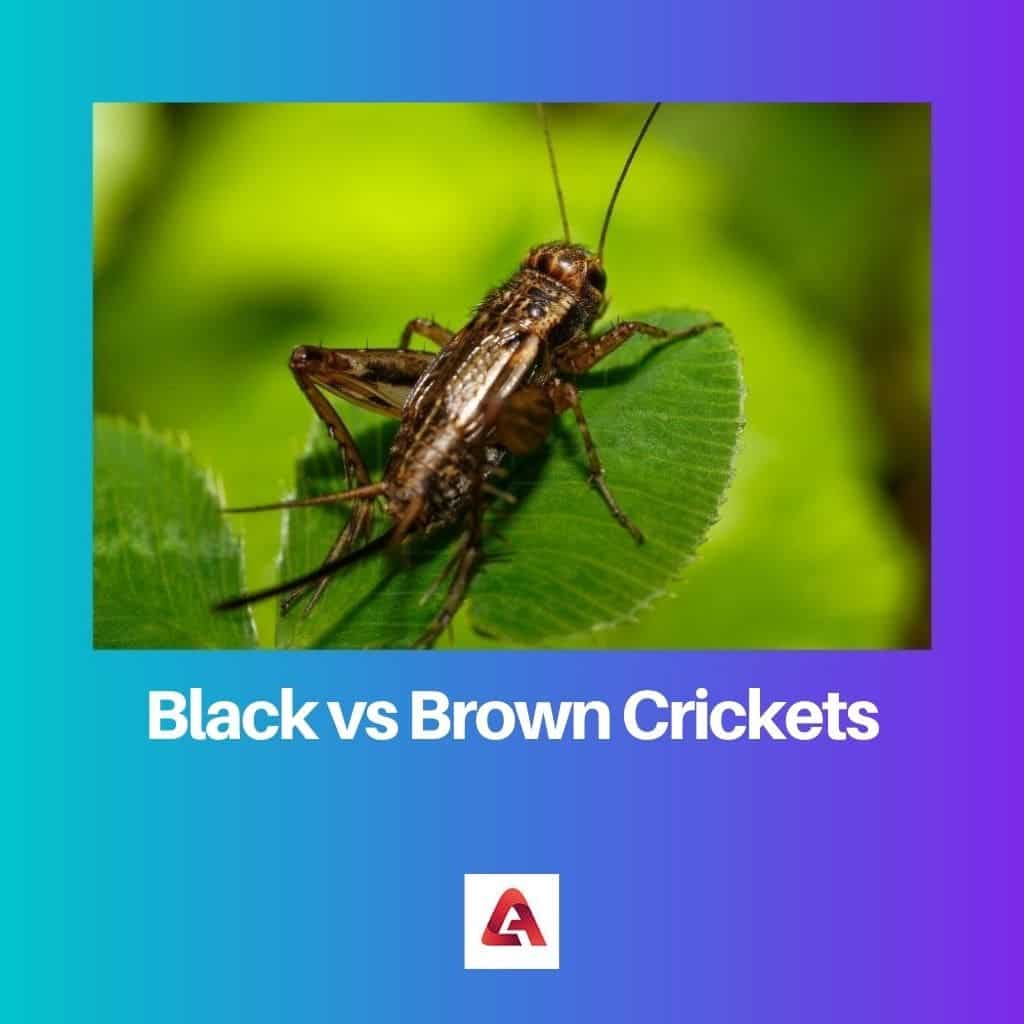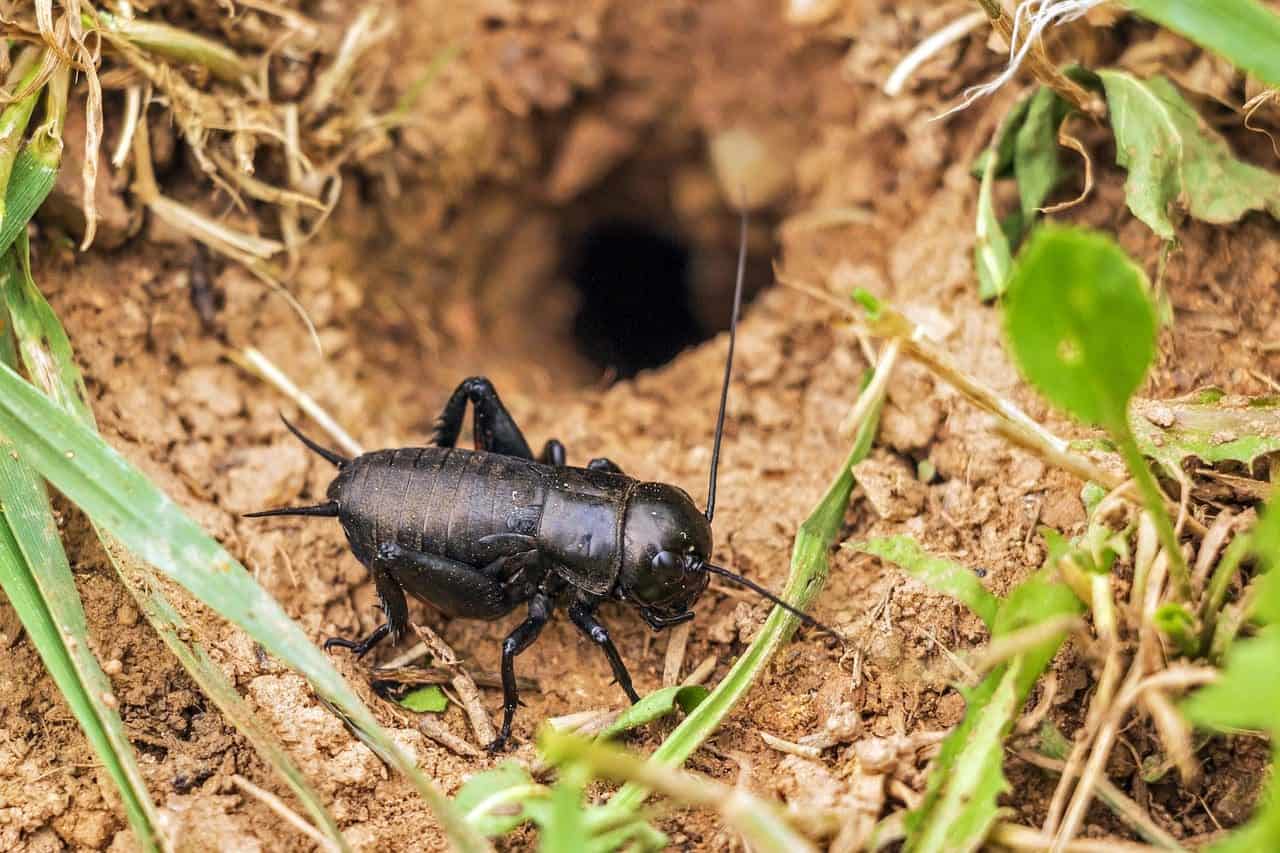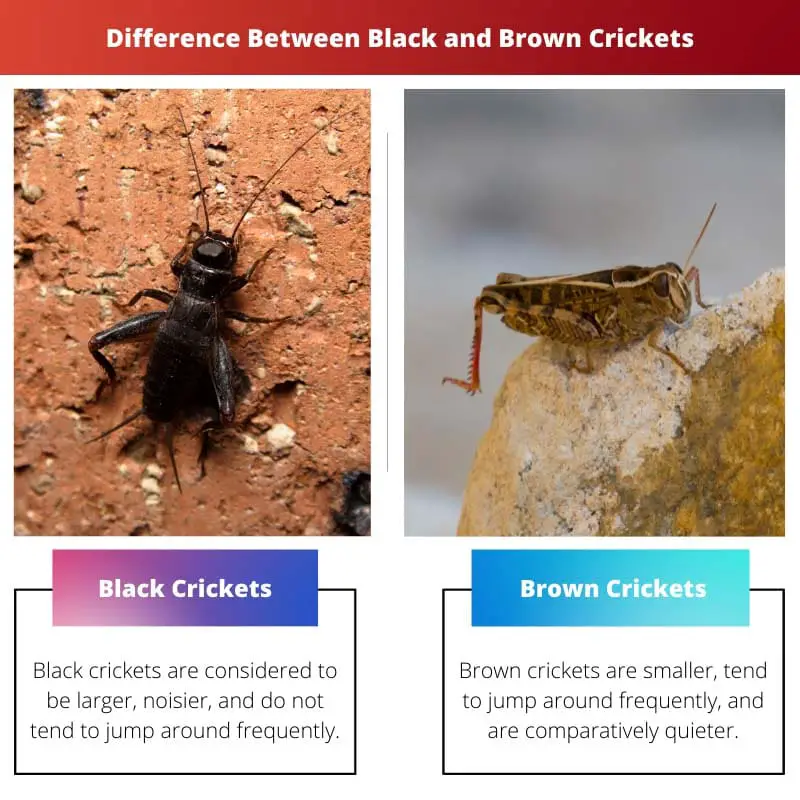Black and brown crickets, variations of the common cricket of the family Gryllidae (which belongs to the subfamily Gryllinae and the order Orthoptera), are insects closely connected to bush crickets or katydids and remotely related to grasshoppers.
Key Takeaways
- Black crickets (Gryllus Bimaculatus) and brown crickets (Acheta Domesticus) are two common species used as live food for reptiles, amphibians, and birds.
- Black crickets are larger, noisier, and more aggressive than brown ones, which tend to be smaller, quieter, and less aggressive.
- The choice between black and brown crickets as a food source for pets depends on the size and preferences of the animal, as well as factors such as noise tolerance and ease of handling for the owner.
Black vs Brown Crickets
The difference between black and brown crickets is that black crickets are significant, more aggressive, and brawnier with a hard exoskeleton, making it hard for insectivores to bite and mostly remain on the ground and move more slowly than the brown ones. In contrast, brown crickets are slimmer, less aggressive, more compact, have a softer exoskeleton which makes them easy to chew and has large muscular hind legs, which help them jump about more frequently than black crickets.

Black crickets are primarily classified as field crickets because they are mostly seen outdoors, while brown crickets are categorised as house crickets because they are found in residential areas.
Crickets are categorized as omnivores and are considered scavengers for crickets feast on dying or dead life forms (like plants or insects) in the environment and are likewise favoured as a food source for a variety of reptiles like lizards, spiders, and frogs.
Their anatomy consists of a hard exoskeleton, segmented narrow body, two compound eyes and three simple eyes, well-built hind legs for jumping, two long antennae, straight leathery forewings which serve as an outer protective cover for the large and delicate rear wings, strong jaws for biting, two cerci and an ovipositor (only in females).
The male crickets are prominent for their chirping sounds, produced by rubbing their forewings together.
Comparison Table
| Parameter of comparison | Black crickets | Brown crickets |
|---|---|---|
| House/field crickets | Black crickets are also known as field crickets. | Brown crickets are also known as house crickets. |
| Appearance | Black crickets are considered to be larger, noisier, and do not tend to jump around frequently. | Brown crickets are smaller, frequently jump around, and are comparatively quieter. |
| Exoskeleton | Black crickets are said to have a thicker exoskeleton. | Brown crickets are said to have a softer exoskeleton. |
| Ideal food choice | Black crickets are not very ideally preferred as food in pet shops. | Brown crickets are viewed as an ideal food choice for various amphibian and reptile pets at pet shops. |
| Temperament | Black crickets have an aggressive character. | Brown crickets have a docile temperament. |
What are Black Crickets?
The black cricket, also known as Acheta assimilis (scientific name), belongs to Gryllidae. The Gryllidae belongs to the subfamily Gryllinae and the order Orthoptera.
The black crickets are mostly found outside and are said to be field crickets.
The black crickets are large, meatier, and have spindlier legs. Although the black crickets move pretty slowly, they are considered very aggressive and most likely ought to bite.
Black crickets have a hard shell which is a sign of protection for them as it shields them from being eaten up quickly by other animals.
Black crickets are comparatively noisier as they make loud chirping noises and tend to eat more food. Black crickets are also considered to be ideal pets.
During the day, black crickets hide in the ground, tall grass, the soil or even in organic lawn debris and come out of their hiding spots at night to look for food.
Black crickets are considered omnivores and are said to feed on plants and animal mostly remains. Black crickets are primarily found in the United States, Australia, Mexico and Canada.
A female black cricket can lay up to 400 eggs, and its general life expectancy is expected to last only a few months.

What are Brown Crickets?
Brown crickets, also known as the Acheta domesticus (scientific name), belong to the same family of Gryllidae. Brown crickets are said to be house crickets and are found inside residential areas.
Black crickets are primarily found in Southwestern Asia. In the years 1950 and 2000, brown crickets were mainly used as food in research centres, but now, brown crickets can also be ideal pets.
Brown crickets are, as the name suggests, brown and are 16-21mm in length. Brown crickets are said to have a softer shell, slimmer, and jump more when compared to black crickets.
Brown crickets do not have an aggressive temperament and are most suitable for feeding other domestic animals like iguanas, frogs, lizards, etc. Brown crickets are quieter. They are not as noisy as black crickets.
In 2002, the breeding of house crickets in cricket breeding industries initially stopped due to the cricket paralysis virus but then later continued again in 2010. The house cricket is also an edible insect.
In south-east Asia, America, and Europe, people consume brown crickets, for they are said to be a protein dish that contains omega-3 and omega-6 fatty acids.
Brown crickets survive best at a temperature of 26 to 32 °C, and their lifespan is expected to last approximately 2-3 months.

Main Differences Between Black and Brown Crickets
- Black crickets, also known as Acheta assimilis, which mainly dwell outside the surrounding, are said to be field crickets. Brown crickets, also known as Acheta domesticus, mainly dwell in residential areas and are said to be house crickets.
- Black crickets have a hard shell, are large, and do not tend to jump around but are said to stroll. Brown crickets have a soft shell, are smaller and slimmer, and tend to jump around using their muscular legs.
- Black crickets have a denser and thicker exoskeleton which protects them from being eaten by other animals. Brown crickets have a softer and thinner exoskeleton.
- Black crickets are not preferably used as food fodder in pet shops since black crickets have a hard shell. Brown crickets are the ideal food used in pet shops to feed amphibian and reptilian pets and can be bred domestically.
- Black crickets are said to have an aggressive temperament and tend to bite people. Brown crickets are calmer and do not have a bold character.


I’ve never been a fan of crickets, but I have to admit this was a very compelling read
I’m not a fan either, but the details provided here are fascinating
Definitely not my favorite either, but there’s something captivating about this article
I never thought I’d be so interested in crickets, but this article really grabbed my attention!
It’s surprising how much there is to learn about even such common creatures
I felt the same way, Ross. This was a great read!
Very informative article! I had no idea there was such a difference between black and brown crickets
I couldn’t agree more with your comment, Mary. This article was very enlightening!
I never knew crickets could be used as pets. Very interesting, thanks for sharing!
Yes, they can make very affectionate pets actually. I’ve had a few myself
I could listen to black cricket sounds all day, so soothing!
It’s a unique sound for sure, Julie
I find it soothing as well. Music of nature
Their exoskeleton differences never even crossed my mind. Such an interesting fact!
I know, right? It’s quite fascinating
I see the advantages of brown crickets but black crickets are so fascinating as well!
Definitely! There’s something very intriguing about black crickets
They are indeed, Graham. Nature is always full of surprises
Who knew crickets were so versatile? Quite a fascinating read!
There’s a lot more to crickets than meets the eye, right?
Absolutely fascinating stuff. Nature is truly incredible
The behavior differences between black and brown crickets is quite interesting, great work!
Couldn’t agree more, Charlie. The whole article was very intriguing
Very well-written. I do wish there was more information about their mating habits, though
I was wondering about that as well. It would be a great addition to the article